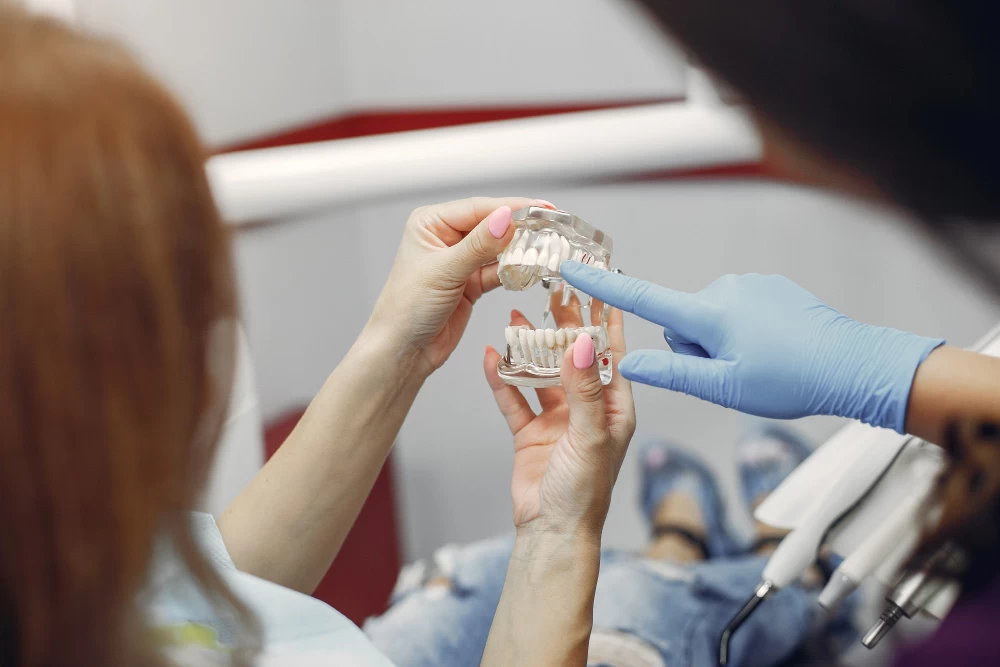
Root Canal Treatment in Dentistry
- Root Canal Treatment in Dentistry
- What is Root Canal Treatment?
- When is Root Canal Treatment Preferred?
- What are the Steps Involved in Root Canal Treatment?
- What Precautions Should Be Taken After Root Canal Treatment?
What is Root Canal Treatment?
Root canal treatment is a commonly used dental procedure. It is performed when the soft tissue inside the tooth, called the dental pulp, becomes infected or damaged. Infected or damaged pulp can cause severe pain, sensitivity, and other discomforting symptoms. Root canal treatment is used to address these issues and save the tooth.
When is Root Canal Treatment Preferred?
Root canal treatment is preferred for the following conditions:
- Pulp infection: When the dental pulp becomes infected, bacteria affect the pulp tissue and cause an infection. This condition can manifest with severe pain, sensitivity, swelling, and discoloration of the gum tissue. Root canal treatment removes the infected pulp, eliminates the infection, and saves the tooth.
- Pulp inflammation: Inflammation of the dental pulp leads to symptoms like pain and sensitivity. Pulp inflammation often occurs due to deep decay, repeated dental procedures, or trauma. Root canal treatment alleviates the pain and discomfort by removing the inflamed pulp.
- Pulp necrosis: When the dental pulp tissue dies completely, it results in pulp necrosis. This usually happens due to advanced decay, trauma, or repeated procedures. Pulp necrosis increases the risk of tooth infection and can spread to the surrounding tissues. Root canal treatment eliminates the dead pulp, reduces the risk of infection, and preserves the tooth.
Root canal treatment removes the infected or inflamed pulp, allowing for the preservation of the natural tooth and avoiding extraction. However, root canal treatment may not be suitable in every case.

What are the Steps Involved in Root Canal Treatment?
Root canal treatment typically involves the following steps:
- Anesthesia: Prior to the procedure, local anesthesia is administered to numb the tooth. This ensures a painless experience during the treatment.
- Access: The dentist creates an opening in the tooth to access the pulp chamber. This opening serves as an entry point for removing the pulp and performing the root canal treatment.
- Pulp removal: The dentist completely removes the infected or damaged pulp. This step aims to clean the inner portion of the tooth and eliminate the infection.
- Canal shaping: During root canal treatment, the dentist shapes the canals using specialized instruments. The canals are thoroughly cleaned to treat the infection and reduce the risk of future infections.
- Canal filling: The shaped canals are filled with a rubber-like material called gutta-percha. This material seals the canals, preventing re-entry of bacteria.
- Restoration: After the completion of root canal treatment, the access opening on the tooth is closed with a filling or dental crown. This helps restore the functionality and appearance of the tooth.
However, in rare cases, reinfection or problems with the tooth may occur.
What Precautions Should Be Taken After Root Canal Treatment?
After root canal treatment, it is important to take note of the following precautions:
- Pain and sensitivity: Mild pain or sensitivity after root canal treatment is normal and typically subsides within a few days. You can use pain relievers recommended by your dentist and apply cold compresses to alleviate the discomfort.
- Dental hygiene: Practicing good dental hygiene is crucial after root canal treatment. Regularly brush your teeth, use dental floss, and rinse with mouthwash. This helps reduce the risk of infection and maintains the overall health of your teeth.
- Temporary restoration: After completing the root canal treatment, a temporary restoration may be placed on the tooth. Avoid consuming hard or sticky foods to prevent dislodging the temporary restoration. If you notice any issues with the temporary restoration, contact your dentist promptly.
- Regular check-ups: Regularly visiting your dentist after root canal treatment is important. Your dentist may take X-rays and conduct examinations to ensure the success of the treatment and the continued health of your tooth.
- Eating and drinking habits: After root canal treatment, it is important to be mindful of your eating and drinking habits to protect your teeth. Avoid consuming hard or sticky foods and refrain from exerting excessive pressure on the treated tooth while chewing.
- Communication: If you experience any problems or discomfort after root canal treatment, promptly consult your dentist. It is important to inform your dentist about any pain, swelling, inflammation, or abnormal condition in the treated tooth.
Your dentist will provide you with specific instructions and guidelines to follow after the treatment. It is important to adhere to these instructions carefully to ensure the success of the treatment and maintain the health of your teeth.





